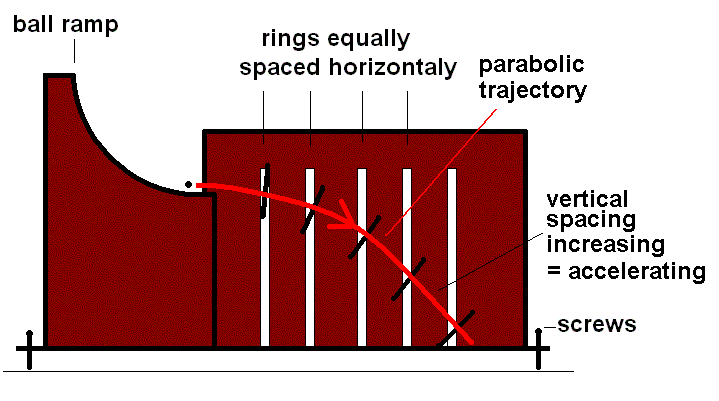

When the ball falls down the curved ramp (top left hand side of photo) it picks up speed and because of the ramp shape eventually comes off with only a horizontal velocity. However once free from the constraints of the ramp it is also free to fall under gravity. If the rings are arranged so that the ball will pass through each one on its way you can see the path of the ball by the position of the rings. The rings are evenly spaced horizontaly and as the ball comes off with constant horizontal speed it will take the same time to go through each of the rings.
With a bit of trial-and-error, running balls down the ramp, the rings can all be positioned so that the ball will pass through the middle of each ring as it makes its trajectory through the apparatus. We discover that the ring spacing must be increased vertically, and this shows that the ball is accelerating downward under gravity - the shape is called a parabola.
We also find that different size (and so different mass) balls take the same trajectory and that the path is not dependant on the mass - assuming that the ball density is always much greater than air (so that we can ignore air resistance). This is what Galilao found dropping two different balls from the tower of pisa and what the Apollo teams found on the airless moon when they dropped a falcon feather and a hammer !

THE CREATIVE SCIENCE CENTRE
home | diary | whats on | CSC summary | latest news